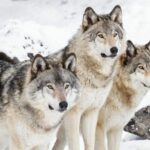Animal behavior is a field filled with remarkable stories that often mirror the complexity and ingenuity we see in human actions. From intricate social structures to unique survival tactics, animals never cease to amaze us with their behaviors.
Dolphins’ Communication Skills
Dolphins are known for their advanced communication abilities. They use a complex system of clicks, whistles, and body language to convey messages to each other. Studies have shown that dolphins can even refer to each other by unique signature whistles, much like humans use names. This intricate communication system allows them to coordinate hunting strategies and maintain social bonds.
Elephants’ Emotional Intelligence
Elephants are highly emotional animals, capable of experiencing a wide range of feelings such as joy, grief, and empathy. When a member of their herd dies, elephants have been observed mourning the loss, often returning to the site and gently touching the bones with their trunks. This behavior highlights their deep social connections and capacity for empathy.
Octopuses’ Problem-Solving Skills
Octopuses are incredibly intelligent and have demonstrated remarkable problem-solving skills. They can navigate mazes, open jars to access food, and even use tools. In one famous experiment, an octopus named Inky escaped from its tank at the National Aquarium of New Zealand by slipping through a small gap and making its way down a drainpipe to the ocean. This demonstrates their ability to adapt and think critically to overcome challenges.
Bees’ Waggle Dance
Honeybees perform a unique dance known as the waggle dance to communicate the location of food sources to other members of the hive. The dance involves moving in a figure-eight pattern and waggling their bodies. The direction and duration of the waggle part convey precise information about the distance and direction of the food source relative to the hive. This sophisticated form of communication showcases the cooperative nature and intelligence of bees.
Wolves’ Pack Dynamics
Wolves live in highly structured social units called packs, which are usually composed of an alpha pair and their offspring. Pack members have distinct roles, from hunting to taking care of the young. The alpha pair leads the group, and their leadership is maintained through displays of dominance and submission. This structured social organization helps wolves efficiently hunt large prey and protect their territory.
